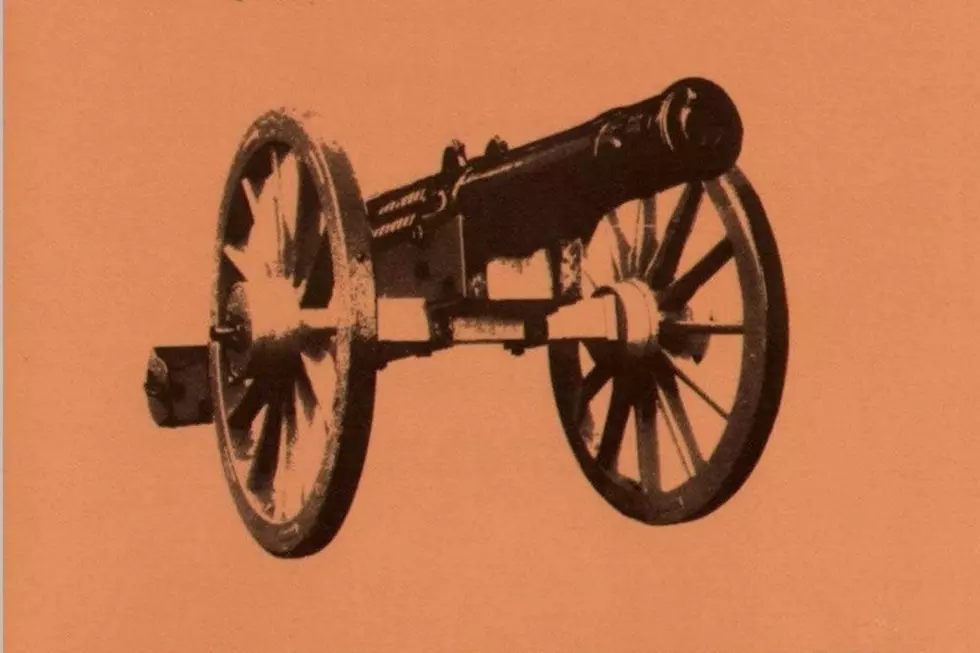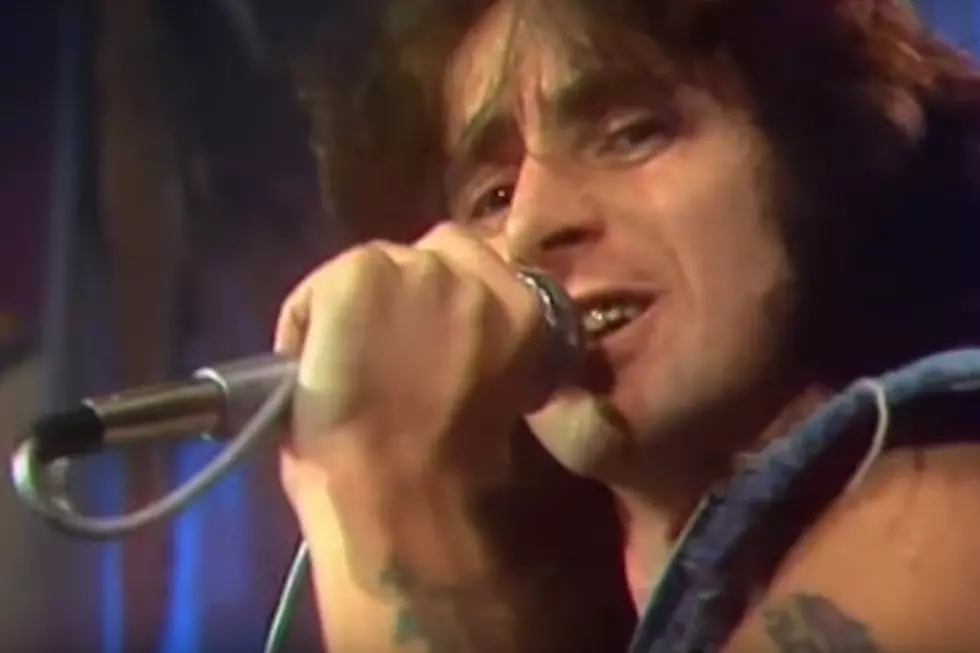
How AC/DC Scored Their First No. 1 With ‘For Those About to Rock’
AC/DC was on the way to finally reaching the music industry's proverbial top of the mountain when For Those About to Rock We Salute You was released on Nov. 23, 1981.
It then began its march to No. 1 – the band's first on the U.S. album chart (followed by 2008's Black Ice). But AC/DC's eighth album wasn't their breakthrough – that honor goes to the previous year's Back in Black. For Those About to Rock ... was a mere victory lap.
But it was a deserved one, given the seemingly insurmountable odds of surviving – never mind thriving – that followed the alcohol-related death of frontman Bon Scott. AC/DC did survive, as Back in Black sold millions of copies and made the group (now fronted by Brian Johnson) headliners for life.
Then, in the spring of 1981, Atlantic Records decided to capitalize on the band's rising popularity by belatedly releasing 1976's Dirty Deeds Done Dirt Cheap in the U.S. – a short-sighted money grab that confused fans about the transition from Scott to Johnson, and infuriated the group, according to Mick Wall's unauthorized biography Hell Ain't a Bad Place to Be.
"The band, who were apoplectic with rage but didn't have the power to stop the release, did their best to cover their record company's tracks, claiming the release of Dirty Deeds was essentially to counter U.S. bootlegs of the album," Wall wrote. But rhythm guitarist Malcolm Young was privately furious and, according to Wall, "It was with this bloody-minded attitude that he arrived in Paris in the summer of 1981," to start working on For Those About to Rock ... with Johnson, baby brother and lead guitarist Angus Young, bassist Cliff Williams, drummer Phil Rudd and returning producer Robert John "Mutt" Lange.
Since shepherding Back in Black (and, before that, 1979's Highway to Hell) to perfection, Lange's reputation had been further boosted by his recent work on Def Leppard's High 'n' Dry and especially Foreigner's colossal hit 4, but he remained a patient and exacting taskmaster.
Problem is, AC/DC wasn't in a patient mood, so when Lange put the sessions on hold while he tested different studios in search of the sounds he was looking for, the musicians got antsy.
"We are always well prepared," Angus said in Wall's book. "We go in the studio with completed songs and we know what we want. We don't fuck around much – unlike Mutt Lange. But that guy has always been slow. Real slow. He'd need forever to get anything done. Otherwise it would have been in and out in a week." In a 2004 interview with Mojo, Malcolm confirmed Lange "was trying to outdo Back in Black for sound, and it was the sound he was looking for whereas we were thinking of the music – and the performances were starting to suffer."
Listen to AC/DC Perform 'For Those About to Rock'
In the middle of August, AC/DC was forced to pull up stakes and interrupt a recording process it had expected to have finished by then, to play a pre-scheduled headline date at the prestigious, but pressure-packed, Donington Monsters of Rock Festival. From the audience's perspective, AC/DC's set was utterly victorious, but technical and organizational problems behind the scenes wound up compounding the band's frustrations and, according to Wall, directly led to the dismissal of manager Peter Mensch just a few days later. And the album still wasn't finished.
AC/DC and their perfectionist producer finally wrapped up recording on For Those About to Rock ... after a few more weeks of teeth-grinding effort deep into the month of September – including a quick flight on a Concorde to New York so that a single mastered acetate could be cut, from which Lange could ascertain a few lingering issues with the sound that still bothered him. "By the time we'd completed the album, I don't think anyone, neither the band or the producer, could tell whether it sounded right or wrong," Malcolm said in a 1992 interview with Mark Blake reprinted in Murray Engleheart' AC/DC bio Maximum Rock & Roll. "Everyone was fed up with the whole album."
Nevertheless the album's title track, inspired by Roman gladiators and back-dropped by a 21-gun salute, was a triumph: a ready-made concert-closer for much of the band's career. Other side one cuts like the mega-grooved "Put the Finger on You," slow-burning "Let's Get It Up," the anti-drug "Inject the Venom" and rampaging "Snowballed" gave fans little cause for complaint. They may not have been categorical classics like the bulk of Back in Black, but they were close enough, and it was side two's less cohesive sequence – including the likes of "Evil Walks," "Night of the Long Knives" and "Spellbound" – that yielded some love/hate results among the AC/DC faithful in years to come.
But that came later. As the album was arriving in stores, AC/DC was already back on tour in the States – only this time the Hells Bell that had become a popular prop during the Back in Black shows was overshadowed by a dozen replica military cannons that were deployed on a nightly basis to provide an explosive punctuation to the new album's climatic title track.
At the same time, Malcolm was already pining for the simpler days of past tours, mentioning the modest pub where AC/DC had made their U.K. debut half a decade earlier when he told Dave Lewis of Sounds in 1982, "I wanted to go back to the Red Cow and just pay with eight lights an two speaker columns."
Such nostalgic musings were put on hold as AC/DC proceeded to take over the rock world, one massive arena at a time. They then navigated a rough patch of lineup instability, business missteps and lower album sales for the rest of the '80s before reemerging at full strength with 1990's The Razor's Edge.
Weird Facts About Rock's Most Famous Album Covers
Check Out Angus Young’s Guitar Hero Yearbook Picture
More From Ultimate Classic Rock









